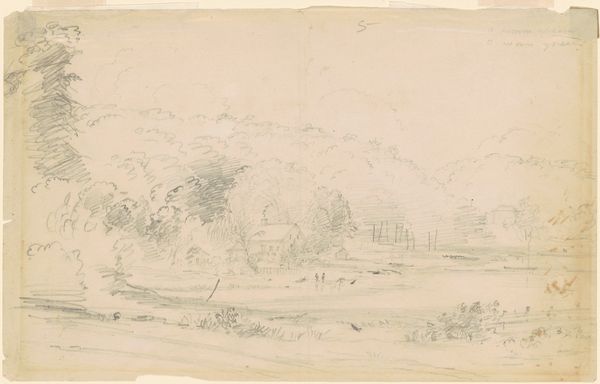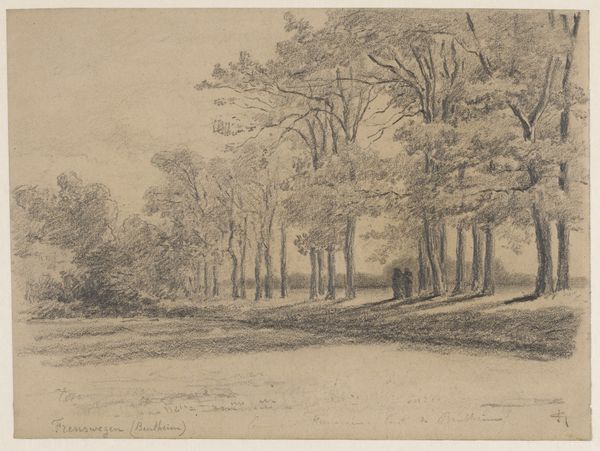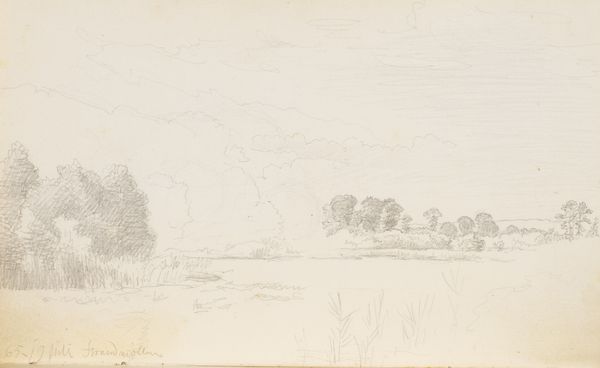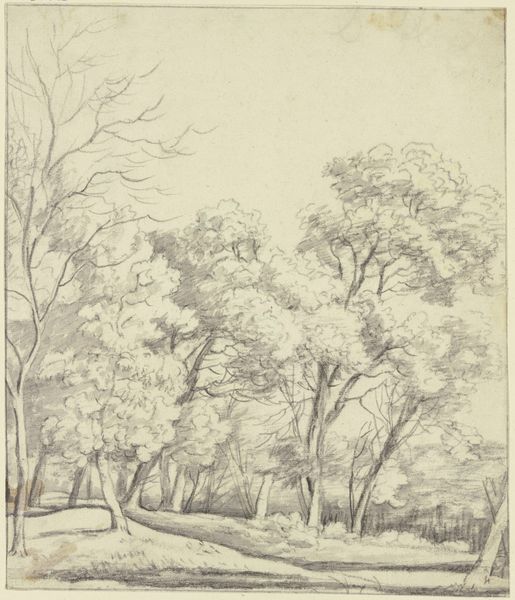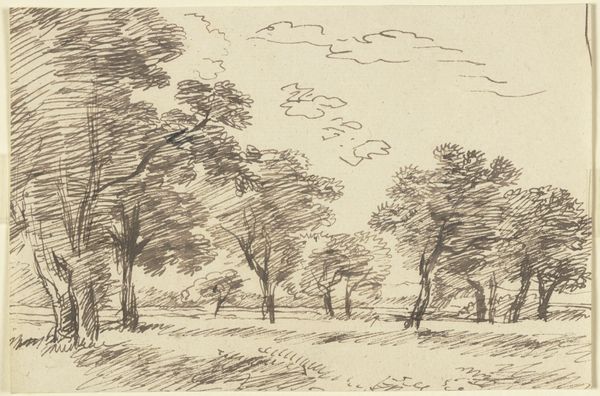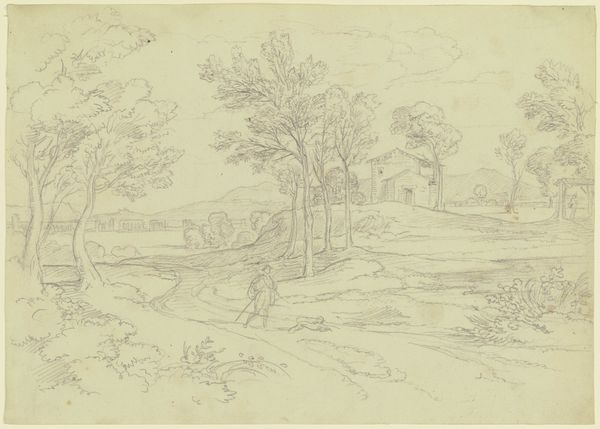
Dimensions: height 210 mm, width 275 mm
Copyright: Rijks Museum: Open Domain
Curator: This is "Heuvellandschap met bomen," or "Hill Landscape with Trees," a graphite drawing completed around 1858. It currently resides here at the Rijksmuseum. Editor: There’s a stark simplicity here. A field dominates the foreground with a copse of trees mid-ground. Very tonal. Quite immediate. I wonder how long Postma spent rendering this landscape? Curator: Well, Gerrit Postma was working during a period of increasing industrialization in the Netherlands, when there was growing appreciation for nature. It represents a sentiment echoed in much Romantic landscape painting. Think of this landscape as being charged with a desire to record the nation and its landscapes for prosperity. Editor: You know, looking closer at the drawing materials, the graphite pencil would have been relatively new. Its increasing availability democratized the practice of drawing. Cheaper production values allowed the artist to easily sketch ‘en plein air’ more easily. Curator: Indeed, there’s a sense of direct observation in the rapid hatching marks. This piece stands in dialogue with the wider artistic field of landscape art as well, especially the Hague School and their influence across the Netherlands. Editor: Yes, but it feels less concerned with high art. What is compelling is that the immediacy provided by pencil and paper enabled anyone to capture their environment – the drawing becomes about process rather than perfection. The lines denote shadows, the tree is heavily worked. Curator: And this work also reflects broader trends in 19th-century European art. The Romantics’s embrace of landscape was not simply about pretty views; it was intertwined with nascent nationalism. There was increasing concern for protecting nature, especially after so much deforestation to support Dutch industry. Editor: Do you think that this informed the use of a reproducible media? Graphite meant multiples. Landscape in every home. The subject captured in simple marks: consumption and creation collapsed together. Curator: In examining this artwork, we see a tension between capturing an ephemeral moment and engaging with pressing questions facing Dutch society. Its value extends beyond aesthetics; it serves as a window into a changing nation. Editor: A quick and accessible image produced with emerging tech... "Heuvellandschap met bomen" demonstrates the way a material changes art history and its role in recording the every day.
Comments
No comments
Be the first to comment and join the conversation on the ultimate creative platform.
